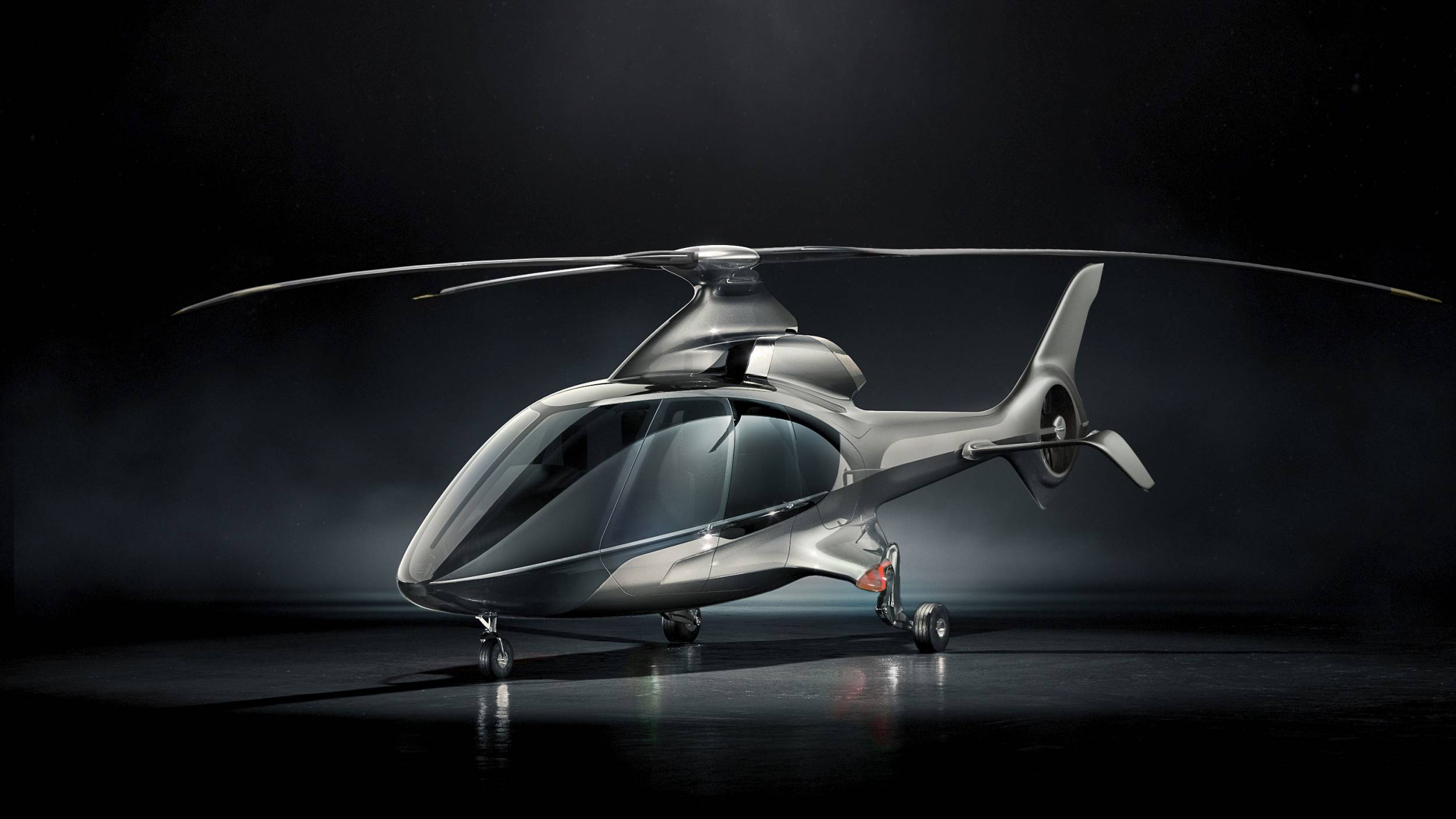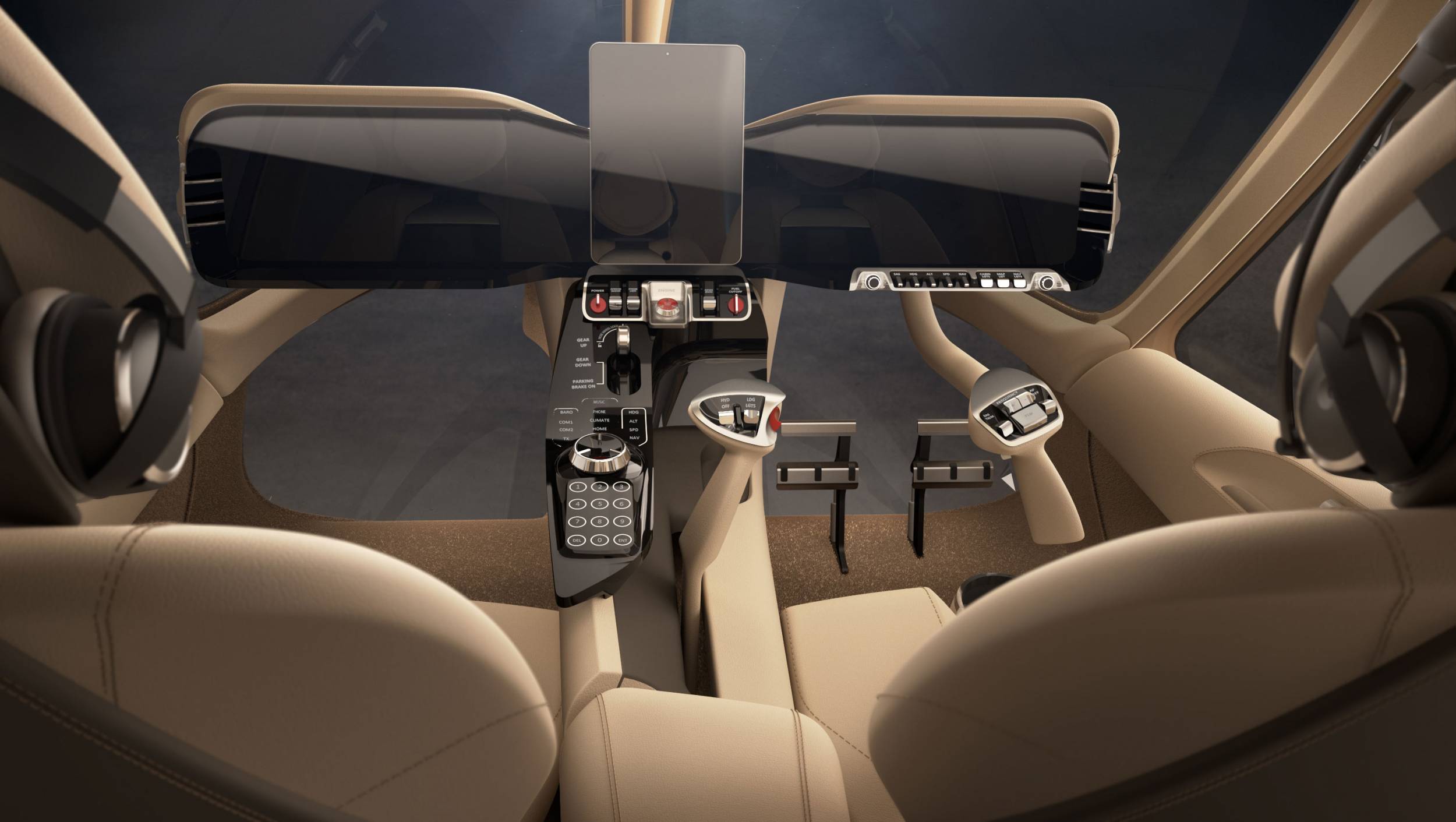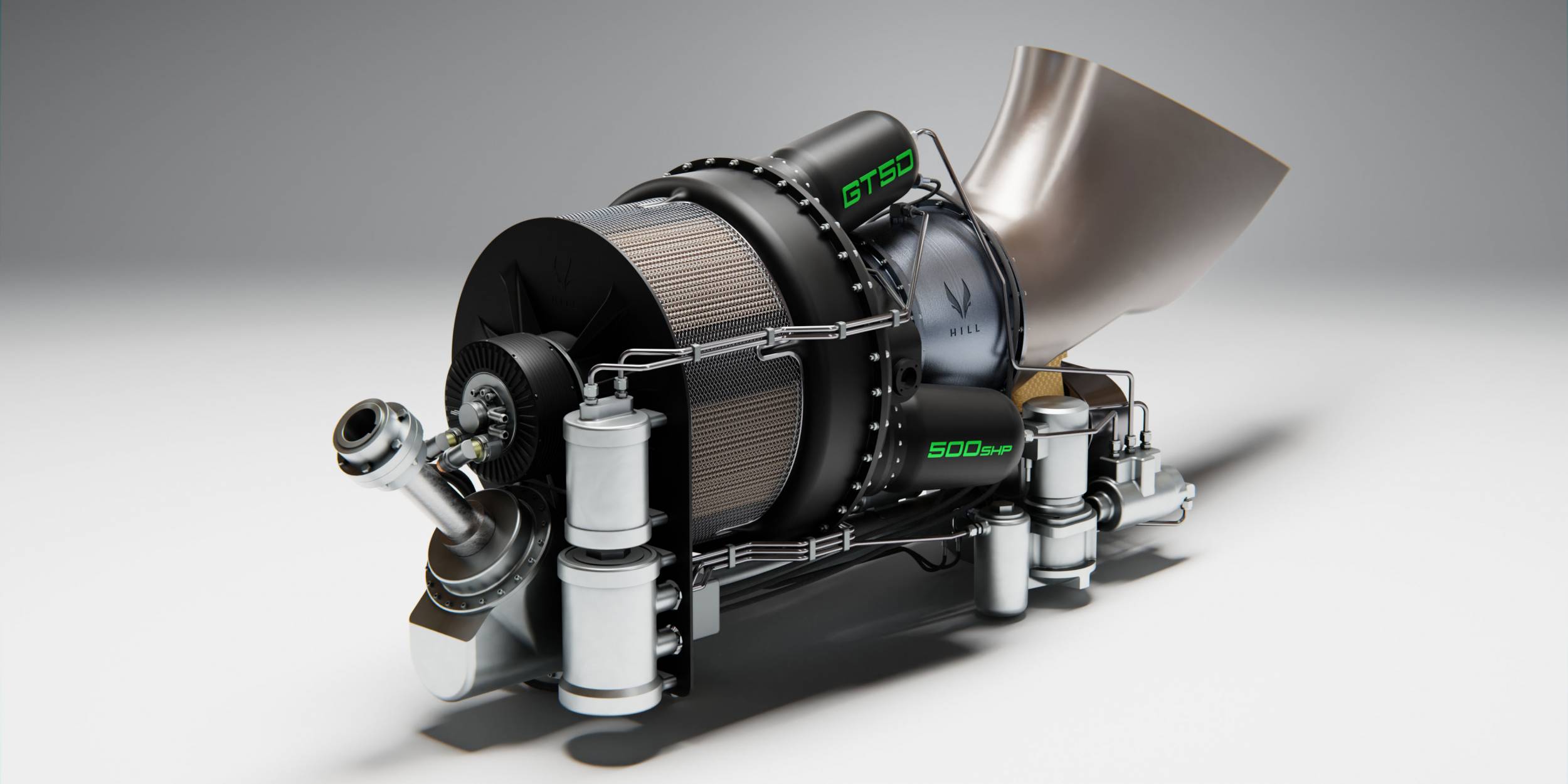Click Here to View This Page on Production Frontend
Click Here to Export Node Content
Click Here to View Printer-Friendly Version (Raw Backend)
Note: front-end display has links to styled print versions.
Content Node ID: 406290
Hill Helicopters has reported that it has accumulated more than 340 orders for its turbine single-engine kit HX50 and to-be-certified HC50 helicopters.
The sales pace surprised CEO Jason Hill, who said that sales came from 38 countries and significantly bested orders from competitors, although Hill's helicopters have not yet entered service. “We have a 51 percent market share. We're outselling the [Robinson] R44 by 2.3 to one, the R66 by four to one, and the Bell 505 by 4.6 to one,” he told a recent virtual global meetup audience.
UK-based Hill unveiled the HX50 in August 2020. The five-seat, light turbine single helicopter is powered by a 500-shp powerplant. Design features include an all-composite, three-blade main rotor, choice of retractable or skid landing gear, and a ducted tail rotor. Performance targets for the HX50 include a 140-knot cruise speed, a maximum payload of 1,760 pounds, and a range of 700 nm.
“The helicopter industry has long awaited an Elon Musk-style disruption that redefines the modern helicopter," said CEO Hill, the founder of Dynamiq Engineering who previously worked at GKN Westland (now Leonardo). "The wait is over. The only way to create something that is truly groundbreaking is to design from the ground up, giving equal focus to aerospace design, performance, and safety as well as to the artistic and experiential aspects, including comfort, ergonomics, intuitive technology, and luxury. The HX50 brings all of this together to deliver a truly unique aircraft and experience.”
While Hill did not discount the myriad difficulties in developing a clean-sheet-of-paper general aviation helicopter, he said the HX50 is “right on schedule and has met all major milestones. We're delivering on all fronts across the program.” He predicted the helicopter will achieve first flight next year and customer deliveries will start in 2023 “as originally planned.” Deliveries of the to-be-certified HC50 are slated to begin in 2026. Hill received additional orders for the $960,000 HC50 in December as part of a promotion to offer the helicopter at a substantial discount through Jan. 31, 2022, to customers who have already placed orders. Those customers will be able to purchase an HC50 for $696,000. 
Hill said the HX50 program has already made substantial and speedy progress, thanks to being completely vertically integrated and the use of manufacturing techniques new to the helicopter industry, such as making the composite fuselage as a single piece. Hill is also manufacturing its own engine, the GT50. “We make stuff in-house,” CEO Hill said. “We have absolute, total control over our cost base. What that means for [customers] is not only that we deliver you an aircraft at the right price point; it also means that we can control the cost of spares and that the through-life costs of support are properly controlled.”
Hill touted the benefits of vertical integration for rapid prototyping. “If you've got a lot of development work to do, it's also important that you can control the costs of developing prototype parts, of iterating things when stuff goes wrong because it will. This isn't going to be a smooth ride the whole time. There's no being beholden to other suppliers and outside firms. We can do it all here. It gives us complete control and that is really what underpins our ability to deliver an aircraft at the right price, on a very sporty timescale, and to give you the confidence that we're going to be able to support and keep the running costs of these aircraft really low.”
It begins with composites. The one-piece, all-composite fuselage is made via a dry-fiber process where the resin is infused as opposed to using the pre-preg, layup method, which has been the more common process in the aviation industry but is more labor-intensive and more costly. Hill said the dry-fiber process is considerably more economical and has been proven in the manufacture of wind turbine blades and pleasure boat hulls (and the Airbus A220). In late December, Hill successfully completed a 30 percent scale model of the HX50 fuselage using the dry-fiber process.
“There's no reason why those processes can't be applied to aerospace, and indeed many of the big manufacturers are looking at them,” Hill said. “We've taken that process and demonstrated that we can produce a single-piece fuselage using [it]. That makes a huge difference, not only to the piece price of the composite parts that we make but also the capital that we need to be able to set up for composites manufacturing at scale. So this is absolutely critical to everything that we do within the company. The blades are composite. The crash cell is composite, the fuselage is composite. The booms are composite and all the fairings are composite. This is a core technology for the business.”
The all-digital glass flight deck is another area where the company has made significant progress, Hill said. The company intends to use three 4K-resolution touchscreens with oversized instrument depictions to display critical aircraft performance data and information. The cockpit is designed so that it is “possible for people who don’t fly that often to get back into their helicopter and be completely current” and find the experience “as car-like as possible.”

The screens combine to give the appearance of a “monolithic piece of touchscreen glass across the front of the aircraft” that delivers “big, bold, clear flight instruments and context-sensitive information so you only get what you need.” Hill said popular navigation apps could be loaded directly onto the aircraft and displayed on the center screen. “It gives you great visibility, much clearer maps, a much easier user interface than you've ever had before,” he said, adding that the layout was ideal for depicting synthetic vision and terrain awareness straight across the three screens.”
Hill also gained attention, and skepticism, when it announced it would develop its own turbine engine, the GT50, for the helicopter. But the company said that the development of that aircraft component also has made substantial progress as a significant amount of high-tech machining capability has been acquired. “The beauty of doing an engine and an aircraft at the same time is we can essentially design the aircraft that we want. So you start with how much payload, speed, and performance you want and that defines what the engine needs to be—not the closest thing that you can buy off the shelf from existing manufacturers,” Hill said. 
“We have to be able to control the cost of the engine and central to that is making our own compressor wheels, turbine blades, castings, and casings, even making our own gears and bearings. That really is what this first wave of equipment that we've invested in is all about,” Hill said. “You don’t have to be great to start but you have to start to be great.”
Hill Discounts eVTOL Market
The CEO of Hill Helicopters expressed skepticism about the future of eVTOLs during the virtual “Global Meetup” late last year. Dr. Jason Hill said alternative energy sources for these aircraft—battery power and hydrogen—remain impractical as are the total costs likely associated with these aircraft.
“It's going to be decades before we have batteries or a means of storing enough electrical energy for a genuinely battery electric aircraft to be practical,” Hill said, adding that eVTOL operators are “going to find it very hard to make a living” and that these new aircraft are not “an immediate threat for us.”
“The only way to get off the ground vertically more efficiently than a helicopter is in a balloon. So I think a lot of these fancy configurations that [eVTOL] people are trying are all well and good, but I don't believe they offer any material advantages over a well-designed, modern helicopter,” Hill said. “Those [eVTOL] companies will struggle when they try and hit commercial viability. Trying to make money from an existing general aviation aircraft is very difficult. You have to fly enough hours to offset your enormous fixed costs. If you try and do that with a machine that can only fly for five minutes, you have precious little chance.”
Hill said battery-powered aircraft, in all likelihood, “are going to end up being every bit as or more expensive than a conventional turbine aircraft, but far less mission flexible, far less capable.” Hill also threw shade on hydrogen power, noting, “I don’t think that will work either. The problem with hydrogen is it has a really low density. Jet fuel is about 800 kilos per meter cubed. Hydrogen is 72 kilos as a liquid per meter cubed. The amount of energy in a fuel is defined per unit mass. If it's got a low density you need a huge volume of it to have the kind of range that we're offering [400-700 nm] with the HX50.”
Hill said any practical alternative to pure internal combustion power likely will involve some degree of hybridization. “I think that's something that could offer a great suite of benefits to private owners and commercial operators,” he said. However, Hill said the massive amount of money and attention being devoted to eVTOLs has one immediate benefit for commercial aviation “in terms of the opportunity that it provides for us. It's clearly showing how many people want to do point-to-point travel, and that is an opportunity for [the commercially certified] HC50. That's an opportunity for a good commercial helicopter.”